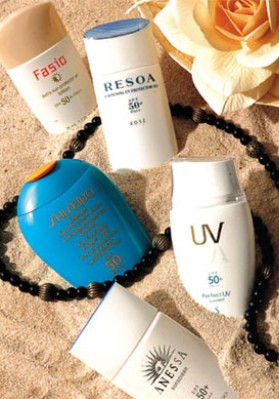
Slathering on suncream at the first hint of sunshine has become commonplace - we're far more sun safety conscious than a decade ago and spend a lot of money a year on products designed to ward off the sun's rays.
在第一缕阳光出现之际就给自己涂上厚厚的防晒霜,这是在普通不过的事情了。与10年前相比,我们现在更加关注防晒;每年我们会在购买防晒产品上一掷千金。
Despite this, cases of skin cancer are continuing to rise and the main cause remains overexposure to the sun. Could it be that the creams we use, or misuse, can cause as many problems as they attempt to solve?
尽管如此,皮肤癌病例还是持续增加,而过度日晒依然是罪魁祸首。有没有人想过使用或误用这些防晒霜恰恰会适得其反。
Most suncreams are broad spectrum, providing protection against the ageing UVA rays, which cause skin damage and premature wrinkles, and the stronger UVB rays that cause sunburn.
大多数防晒霜都是广谱型的,既能抵抗UVA射线造成皮肤老化,预防皮肤受损及幼纹的形成;又能防止被UVB射线晒伤。
Consumers can choose between a physical block, which sits on the surface of the skin causing UV rays to bounce off, or chemical sunscreens, which are absorbed by the skin and deactivate sunlight when it comes into contact with the body's surface.
顾客可以选购物理防晒或者化学防晒。其中物理防晒品会在皮肤表面形成反射层,而化学防晒品被皮肤吸收后会在身体接触日光时提供防晒保护。
The latest creams combine the best of both. But the paradox is that, in fusing the cream of sunbattling ingredients, manufacturers have created new health concerns.
最新的防晒霜综合了这两种防晒原理的优点。但令人倍感矛盾的是,在融合这些防晒成分的过程中,生产商们也制造出新的健康隐患。












